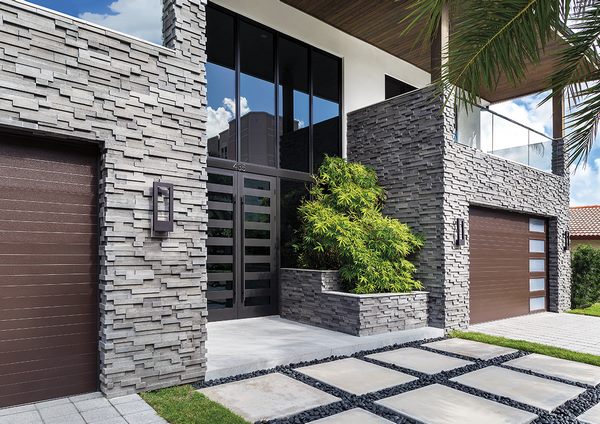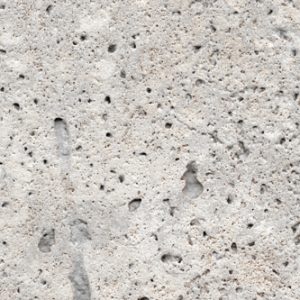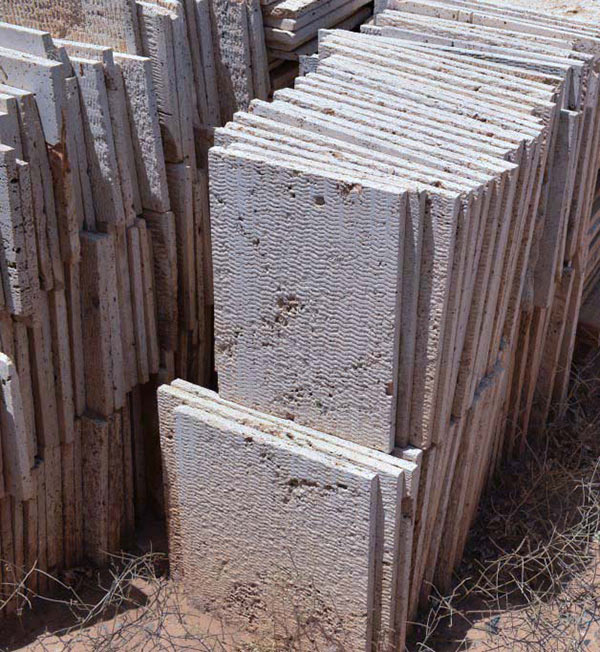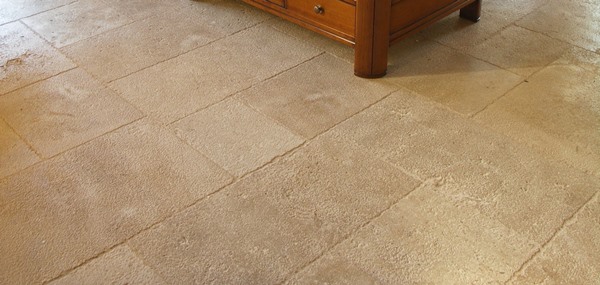- Tell : 09131114998
- Email : info@uranus-stone.com

Familiarity with travertine stone processing methods
- 1401/10/04 ,
- stone industries Uranus
- 0 Comment
Building stones consist of different categories, each of which is suitable for a part of the building. In building architecture, there is a point that each stone is used in its own space according to its color, material and application. In order to use stones in different spaces of the building, it is necessary to make payments on their surface according to the space that is going to be used there. Stone polishing or finishing is a part of the stone production process, which has different types. In the following, we will examine the types of stone processing.
1- Sub or polishing (polishing travertine)
This processing method is one of the main and most common methods used in the production of building stones, especially travertine. When travertine stones are polished, the appearance of this stone becomes very clear, shiny and bright.
The stones that are processed in this way reflect the light, and this makes the surface of the stone always cool, and as a result, travertine stones with a polished processing method are the most suitable stone for use in tropical areas.
How to sand or polish building stone
Stones that are processed in the form of sanded or polished are mostly used for use in the facade of the building as well as the covering of various walls. Processing in the form of sanding or polishing is done in the first step, stone plaques with a width of usually 40 cm are cut from Kop stone.
In the second stage, these plaques are plastered with various materials such as resin and epoxy. This operation is to increase the strength of the stone and its quality. After doing this, the plastered plaques are dried in fire ovens.
In the third step, plastered plaques are sent under the sanding machine, which is usually composed of sanding heads or sanding bits. They use 12 or 16 bits, and for harder stones such as granite, they use more number and different types of subs.
When the travertine stone plaques go under the submachine and pass under the head or subbits, with the pressure exerted on the stone and the rotational movement of the subbits on the stone, the uneven surface of the stone is gradually smoothed and finally it becomes shiny and polished.
In the fourth and final stage, the polished stone is cut by a machine and system that polishes both sides of the stone in the form of a sanding wheel, and cuts the edges of the stone that are not polished.
Read more: Travertine stone in the building facade of wet areas
2- Leather (Leather Finish)
Another method of processing travertine stone is leathering method. In this method, leather stone is produced with the type of processing that takes place. In this method, the surface of the stone is matte and not shiny and therefore does not reflect sunlight, the surface on this stone is natural and gives you a leathery feeling when you touch it..jpg)
In fact, leather processing is done on stones whose surface is not uniform and homogeneous, and the reason is that if the surface on the stone is uniform and smooth, it is not possible to produce low and high during processing. During leather processing, travertine stone They don't use ordinary bits, but they use metal brush bits for this work, so that these metal bits separate the weak parts of the stone in the first stage, so that these parts can be completely removed in the continuation of the operation.
In general, it can be said that in leather processing, the cavities and holes of the surface of the stone are not filled, but it is sanded with the use of blades with metal bits in such a way that it acquires a velvet-like state and has ridges and depressions
3-honed travertine
In Hond's travertine processing method, this product has a uniform but matte appearance, and therefore, unlike the polished stone method, it does not reflect light in this method. In the Hond processing method, similar to the sanding or polishing method, Saab devices are used, but with the difference that in this method, this operation takes place until the surface of the stone is matte, not more, because the stones that are produced by the Hond method, as mentioned, have The surface is opaque.
It should be noted that the travertine stones that are manufactured by the Hond method have an old and classic appearance and give your building an interesting look. Honed stones have a high resistance to scratches and wear and are used in the flooring of high-traffic areas, interior and exterior wall coverings, fireplace areas, edges and around swimming pools, bathroom and kitchen paving, elevator and counter frames. It is suitable for tablecloths and...

4-flaming (flame travertine)
Another method of processing building stones is the method of stone flaking. Filming the stone is mostly to remove the polish ofthe stone surface and thus prevent slipping. Flame means flame in English, in this method, the surface of the stone is burned with a high-temperature flame, and as a result, some of the constituent materials of the stone melt and fall, which causes the formation of It becomes a rough and heterogeneous surface on the surface of the stone.
The purpose of this work is to create friction on the surface of the stone to prevent slippage, and stones produced by this method are usually used in sloping spaces, such as staircases and building entrances and around swimming pools. It should be said that this method of processing stone Travertine is used less often because travertine stones are used more as facade stones due to their characteristics and less than travertine are used for indoor and outdoor flooring and paving.
5- axiom travertine
Stone ax processing method is one of the oldest processing methods that has been used for a long time. In this method, the surface of the stone is scraped using a device called an ax. In this device, hammers with a sharp tip are used to cut the surface of the stone, and the surface of the stone becomes like a nail. It destroys the smooth and polished surface of the stone and prevents the stone from slipping.
Usually, when they want to pave high-traffic areas and also for landscaping and stairs of outdoor and indoor spaces, they use ax stones because this work increases friction and prevents sliding.
Of course, it should be mentioned that in some facade stones, they create an ax shape because this makes the facade of the building more beautiful and interesting. Usually in marble and porcelain stones and sometimes in travertine stones, they create an ax shape. You can see one of the oldest worked samples of Tishei stone in Naqsh Jahan square in Isfahan, which in addition to its beauty indicates that these stones in this state also have great durability and strength.
The processing of Tisheh stone is done with various types, and the most famous types are one-axe, two-axe, left and right axe, model axe, and pickaxe methods, each of these methods has its own beauty and applications.
6-Bush Hammer Travertine
Bushhammer processing is another type of construction stone processing, including marbles and travertine stones. This processing method is very similar to the ax method, with the difference that in the ax method, the surface of the stone becomes like a nail, but in the Bush Hammer method, needles and circular holes are created on the surface of the stone.
In the Bush Hammer method, gear tools with a needle head are installed on the sub machines, which creates the Bush Hammer mode with a rotary movement and check on the surface of the stone, that is, when the stone is in the Bush Hammer mode. It comes with a rough, rough and heterogeneous surface, and in order to eliminate this roughness, in some stone quarries, they use a leather hammer on the stones to remove this roughness and roughness.
The uses and applications of Bush Hammer stones are such as ax processing, filming, leather for covering the exterior spaces of buildings such as paving, stairs and walls, bathroom and toilet flooring, kitchen flooring and sometimes the exterior of the building, etc., because the stones produced by Bush hammers have an uneven and heterogeneous surface that prevents sliding or slipping and is very practical. Bush hammer processing is usually done on marble, crystal, granite and in some cases travertine.

7- Windbreaker
One of the other common and widely used methods in the processing of building stones, including travertine and marble, is stone blowing. In this method, in the factories and quarries, using simple tools such as pen and hammer, stones that are the size of tiles are filled and in this way, wind stones are produced.
As we mentioned, small-sized stones are suitable for wind blowing, and the most common size in this field is 15 x 20 and 15 x 30 cm, although these sizes can be different and variable and can be made in a square or rectangular shape. The suitable thickness for lifting the stone is usually 3 cm, because the greater the thickness, the more suitable it is for lifting and as a result, the resistance of the stone increases.
Most of the building stones have the ability to wind, stones such astravertine , marble , crystal and lime stone are all of these.
The interesting thing about blown stones is that they usually have a wide variety of colors and you can get thistype of stones in the color of your choice. Winding stones are used in various parts of buildings, and the most important of them are interior and exterior facades, interior and exterior wall coverings, paving in various places, elevator frames, entrance door frames, sidewalk paving, and various decorations.
Of course, you should note that you should use limestone wind stones for the interior spaces of the building because the material of these stones is limestone and they are not resistant to weather conditions, and also try to use travertine stones for the facade of the building because travertine has a wide range of colors. They are wide, they are lighter in weight, they have a lot of adhesion, and they are also resistant to weather conditions such as rain, snow, sunlight, etc.
At the same time, it is good to know that although the blown stones have a significant beauty and originality, they have a cheaper price than other stones processed by other methods, and the reason for this can be related to the simple processing and small size of these stones. gave
